
How to Prepare Your Home for a Power Outage
Last Updated: Feb 9, 2025We seldom stop to think about how dependent we are as a society on the energy that powers our lives. Even a short, two-minute power outage can cost businesses thousands of dollars while causing significant interference with our energy-dependent and technological world.
Being without power, even for a couple of hours, during a frigid winter blast is not only uncomfortable but can also be dangerous. A 2015 study published in the British journal The Lancet found that extreme cold weather events were twenty times more deadly than hot weather during the summer. According to the U.S. Energy Information Agency, homeowners across the country experienced an average of almost one and a half energy interruptions. They went without power for four hours during the year. While that might not seem like a lot of time without power, four hours can seem like an eternity when snow is falling and temperatures are in the teens outside.
Table of Contents
- Is the US Power Grid Reliable?
- What Is the Most Frequent Cause of Power Outages in the Us?
- What Causes Power Outages in the Winter?
- How Can You Stay Warm During a Power Outage in the Winter?
- How Do I Protect My Pipes When the Power Is Out?
- What Is the Best Backup Source for a Power Outage?
- Are Backup Generators Worth It During a Power Outage?
- Are Solar Panels Worth It During a Power Outage?
- Are Wood Stoves Worth It During a Power Outage?
- Are Kerosene Heaters Worth It During a Power Outage?
- Preparation is Key

Is the US Power Grid Reliable?
Recent studies have shown that the U.S. power grid is aging quickly, and power losses across the United States are more frequent and of longer duration than that of any other industrialized nation. Severe weather events between 2017 and 2021 account for 25% of utility company downgrades. While citizens of Japan only experience four minutes of “downtime” yearly, a person in Seattle might experience upwards of 250 minutes without power.
What Is the Most Frequent Cause of Power Outages in the Us?
It is also essential to understand that severe weather events cause 70 percent of all power outages in the United States. For example, during Super Storm Sandy in 2012, over 8 million households across 17 states were left without power. Due to global climate change, severe weather events are expected to increase in frequency and strength in the coming years, which only expands the probability of extended power outages.
A resilient and sustainable home will not simply rely on the local utility company to provide the heating and energy needed during the upcoming winter months. Instead, several home renovations and strategies can help homeowners reduce the vulnerability of extended power outages.

What Causes Power Outages in the Winter?
There are several reasons why power outages occur during the wintertime. Firstly, frigid and freezing temperatures can affect parts of the electrical grid. While power lines, transformers, and other elements of our energy systems are designed to withstand freezing temperatures, extended cold spells can cause stress on the system and lead to power outages.
Secondly, ice storms are also responsible for long, winter power outages. Freezing rain can accumulate into a heavy, smooth ice glaze, and the weight of that ice often breaks branches—even whole trees that can fall on power lines. Or, the ice can form on utility poles and the power lines themselves. According to some estimates, a one-quarter inch of ice accumulation can add up to 500 pounds of weight per line span, leading to snapped power lines and tumbling utility poles.
Strangely enough, animals can also cause power outages during the wintertime. Through chewing on power lines or flying into them, squirrels and birds can also cause an unexpected power interruption.
If you wake up to freezing temperatures inside your home in the middle of January, your first reaction will most likely be to turn up the thermostat. If you lose power during the night, several things can be done to protect your life and your home.

How Can You Stay Warm During a Power Outage in the Winter?
Dressing for the occasion is the best thing you can do to keep warm. Wearing multiple layers of warm clothing is essential for cold temperatures, and you should also consider wearing a scarf over your mouth to protect your lungs from inhaling the frigid winter air.
During extended power outages, you will want to close the doors to rooms you won’t use and huddle inside one room. The extra body heat of several people in one room will significantly raise the temperature. If you haven’t winterized your home with weather stripping, you can use duct tape and odd bits of plastic to cover windows and doors and stop cold air from infiltrating your house. Towels can be rolled up and placed under door frames to prevent cold drafts further. It is also important to close all the blinds and curtains of your home at night to protect you from further heat loss. During sunny days, you will want to open the shades on south-facing windows to add passive solar heat to your home.
How Do I Protect My Pipes When the Power Is Out?
It is best to prepare for power outages before they happen. However, there are also things you can do during a power outage to avoid frozen water pipes leading to disastrous bursts. First, wrap your exposed pipes in insulation. Even layers of newspaper can help to keep the pipes warmer. Letting your faucets drip is another way to keep the water inside your pipes moving, thus avoiding freezing. You should also know where your water valve is and how to shut it off.
If your pipes do freeze, open all the faucets in your home and pour hot water over the pipes (assuming you have a gas stove or another way to heat water without electricity). This can help avoid the miserable scenario of cleaning outstanding water in your basement during zero-degree temperatures.

What Is the Best Backup Source for a Power Outage?
The best way to protect your life and your home during an extended power outage in the wintertime is by having a backup power plan. While net-zero homes will produce all (or more) of the energy they use through residential renewable energy options, most homes are not net-zero energy. And many of the homes with solar panels are connected to the grid, meaning that they aren’t able to store the energy produced by their panels during the nighttime when temperatures are at their coldest. Backup power protection through whole home or portable battery backup allows homes to maintain essential services during power outages.
Are Backup Generators Worth It During a Power Outage?
Backup generators will cost you anywhere between $5,000 and $12,000, depending on the size. In most cases, they will be connected directly to your home’s main gas line and can burn various types of fuel to produce electricity. The problem with having a backup generator tied to your gas line is that gas outages can also occur during natural disasters. While a generator can be noisy and will release large amounts of greenhouse gas emissions through burning gasoline, diesel, or other fossil fuels, it is also relatively inexpensive to run. One gallon of gas is usually enough to give your home anywhere between 7 to 10 kWh of electricity, which should last you through the night. Of course, during extended power outages, your house would need to have several gallons of fuel stored in the garage.
Energy Saving Products for the Home
Shop home improvement products that help save and conserve energy (power) in your home.
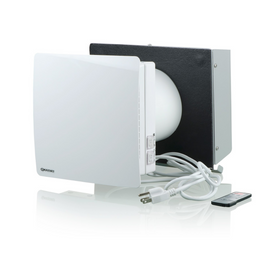
Vents TwinFresh Comfo RA1-50-2 Ductless Energy Recovery Ventilator
Vents
In Stock
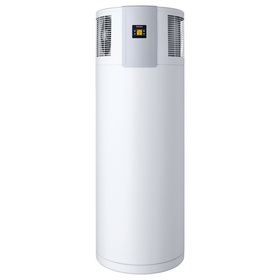
Stiebel Eltron Accelera 300 E Heat Pump Water Heater
Stiebel Eltron
Out of Stock
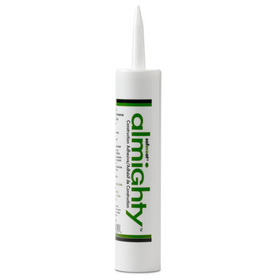
AFM Safecoat Almighty Adhesive Case of 12
AFM Safecoat
In Stock

Emporia Classic Level 2 48 AMP EV Charger UL Listed
Emporia
In Stock
2 Colors

Stiebel Eltron CON 300-2 Premium Wall-Mounted Convection Heater - 202030
Stiebel Eltron
Out of Stock
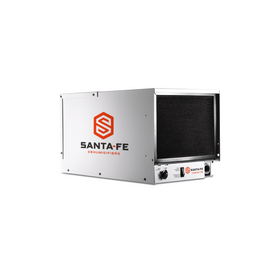
Santa Fe Compact70 Dehumidifier - 4044110
Santa Fe
In Stock

AFM Safecoat 3 in 1 Adhesive
AFM Safecoat
In Stock
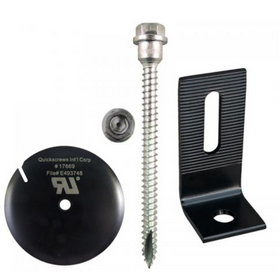
QuickBOLT QB2 with Microflashing Multi Roof Mount Solar Panel Fastener Kit
QuickBOLT
In Stock
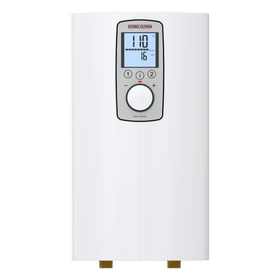
Stiebel Eltron DHC-E 8/10-2 Plus Point-of-Use Electric Tankless Water Heater - 202145
Stiebel Eltron
In Stock
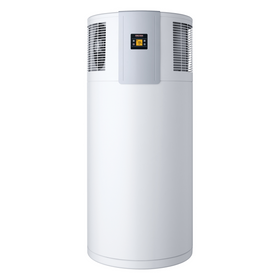
Stiebel Eltron Accelera 220 E Heat Pump Water Heater
Stiebel Eltron
In Stock

Are Solar Panels Worth It During a Power Outage?
Unlike generators, backup batteries can be mounted in your garage or somewhere in your home and can be charged from any power source. If your house has a solar panel system, a battery system will store the energy generated during the day so your household can use it at night. Batteries can also be charged from the electrical grid for emergency use when a power outage occurs.
Are Wood Stoves Worth It During a Power Outage?
A simple wood stove made from either steel or cast iron can add an enormous amount of heat to your home. Besides offering heating during power outages, even a small wood stove is a great way to add a supplemental heat source to your home and thus cut back on your heating bills. This EPA-certified wood stove only costs $528 and can heat up to 1,600 square feet. The primary consideration with relying on a wood stove for emergency heating is that you will need to have a dry, burnable firewood source. For homes in densely populated urban areas, this could present a problem.
Are Kerosene Heaters Worth It During a Power Outage?
Kerosene heaters can also be used for backup heating inside your home. These types of heaters burn relatively cleanly, and since there is no chimney, all of the heat produced will radiate into your home. This kerosene heater produces an impressive 75,000 BTUs and costs under $190. A full tank will allow you to keep your home warm for up to 11 hours. However, like firewood, you will have to keep kerosene stored at your home to be prepared for an unexpected power outage.

Preparation is Key
Prior preparation is the best way to deal with an extended power outage. A home that is well insulated and has sealed all the doors and windows against cold drafts will lose much less heat during a power outage. Having a backup power plan, however, is always a good idea. The best source of backup power and heat will largely depend on the specifics of each home.
For example, if you live in a rural or suburban area where you can find firewood or store large amounts of purchased wood, a wood stove might be the best alternative heating source for your home. On the other hand, if your house has a solar PV system, backup battery power might be a great way to make the most of the unused power that your panels produce during daylight hours.
Whichever option you choose, the backup power and heating options outlined above are a great strategy to protect your home (and those who live in it) during this winter season.
Tobias Roberts
Tobias runs an agroecology farm and a natural building collective in the mountains of El Salvador. He specializes in earthen construction methods and uses permaculture design methods to integrate structures into the sustainability of the landscape.
